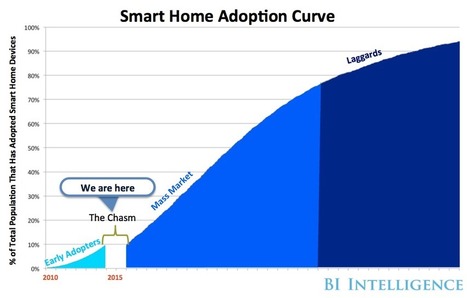The US smart home market has yet to take off. Quirky's recent announcement that it was filing chapter 11 bankruptcy — and selling off its smart home business, Wink — highlights this well.
At its current state, we believe the smart home market is stuck in the 'chasm' of the technology adoption curve, in which it is struggling to surpass the early-adopter phase and move to the mass-market phase of adoption.
There are many barriers preventing mass-market smart home adoption: high device prices, limited consumer demand and long device replacement cycles. However, the largest barrier is the technological fragmentation of the smart home ecosystem, in which consumers need multiple networking devices, apps and more to build and run their smart home.
Research and publish the best content.
Get Started for FREE
Sign up with Facebook Sign up with X
I don't have a Facebook or a X account
Already have an account: Login
Internet of things and wearable technology insights, research, innovations & product news
Curated by
Jeff Domansky
 Your new post is loading... Your new post is loading...
 Your new post is loading... Your new post is loading...

Jeff Domansky's curator insight,
September 1, 2014 2:17 AM
Exploring integral reality and how that compares to virtual reality. Thought provoking reading for your long weekend. |
|













Insight into the US smart home market and when and where it may take off.